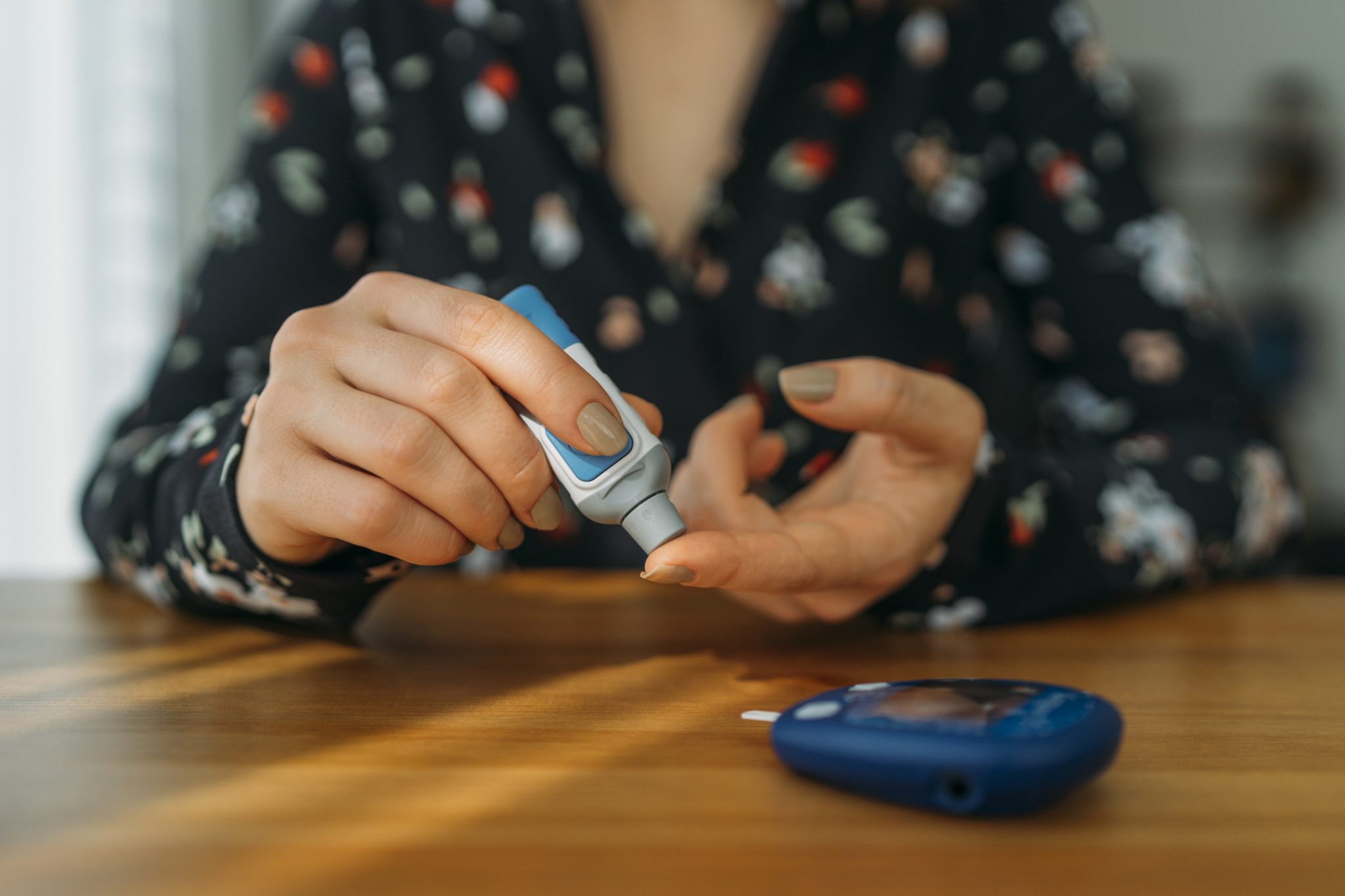Dietitian Helps Barnegat Woman Control Diabetes

October 05, 2022
Nothing was easy for Rose Mary Ancona of Barnegat, New Jersey. At 79 years old and 210 pounds, she struggled to do even the simplest tasks.
“I would get tired just walking from my front door to the mailbox,” says Rose Mary, now 80, whose legs and feet were so swollen from being overweight that she could barely walk. “I would have to sit down on my porch on the way back inside. That’s how tired I was.”
Diabetes Diagnosis
Her weight didn’t just make her tired. It also made her sick. In 2021, she was diagnosed with Type 2 diabetes. Because she was already taking numerous medications—shortly after her husband passed in 2015, doctors discovered a dissected aneurysm in her heart for which she continues to receive treatment—her primary care physician recommended that she see a dietitian.
“I wanted to see if she could naturally control her diabetes and blood sugar without medication,” says Eduard Tapliga, M.D. , who referred Rose Mary to the Diabetes Management Center at Southern Ocean Medical Center. “Although there are drugs we can prescribe, diet and exercise remain one of the most effective tools we have for diabetes management—especially for patients who are already taking multiple medications, in whom there are increased risks of negative side effects and adverse drug interactions.”
Diabetes Consultation and Support
Rose Mary began seeing registered dietitian and certified diabetes care and education specialist Robert Hildebrandt in February 2022. Having previously made many weight loss attempts, she was expecting him to put her on a hard-to-follow program of strict dietary restrictions and requirements. Instead, he took the time to learn about her life and made practical yet impactful suggestions for modifying her daily routine.
It started with a thorough consultation. “I want to learn everything I can about my patients—what their schedule is, what kind of exercise they’re getting, what they’re eating, when they’re eating and how much they’re eating,” Robert says. “Patients like to leave information out or rush through it, but a good dietitian won’t let them skip over the details. You’ve really got to be a good detective.”
The goal isn’t telling patients what things they can’t eat. Rather, it’s educating them about what they should eat.
“Robert was wonderful,” Rose Mary says. “He makes you feel so comfortable, like he’s your best friend. He didn’t tell me, ‘You have to do this’ or ‘You can’t eat that.’ Instead, he gave me a list of foods and said, ‘I’d like you to pick some of these things and try eating them.’ And that’s exactly what I did.”
Small Changes, Big Results
In Rose Mary’s case, Robert wanted her to replace carbohydrates with protein, fiber and healthy fats. Instead of eating oatmeal for breakfast, for example, he suggested having an egg and a cup of coffee or cottage cheese with fruit. A typical lunch is turkey on rice crackers, while dinner might be chicken with a vegetable and salad.
Even the smallest things can make a big difference. “One of the goals I set with Rose Mary had to do with half-and-half in her coffee,” Robert says. “Most people just pour sweet creamers and sugar in their coffee without measuring them, which can really add up. So we talked about measuring her half-and-half. When I followed up with her, she had gotten rid of it entirely and started drinking her coffee black.”
Rose Mary became as diligent about burning calories as she did about cutting them. “I go to the store to exercise,” she says. “I hold onto the basket and walk around.”
Diet and exercise bore fruit quickly. Within just five months, Rose Mary had lost nearly 30 pounds. More importantly, though, she feels better and continues to control her diabetes without medication.
“We know from research that if somebody loses just 10 percent of their body weight, there’s a cascade of benefits, from lower blood pressure to reduction of heart disease to improvements in diabetes,” Robert says. “Rose Mary is certainly experiencing that.”
She’s also experiencing more energy, better sleep and better-fitting clothes and shoes, not to mention increased independence and self-confidence. She’s even becoming closer to her six grandchildren and one great grandchild, a 6-month-old who she can now carry with ease. “Robert has given me a whole new life,” Rose Mary says.
Next Steps & Resources:
- Meet our source: Eduard Tapliga, M.D.
- To make an appointment with a dietitian near you, call 800-822-8905 or visit our website.
- Learn more about diabetes care
The material provided through HealthU is intended to be used as general information only and should not replace the advice of your physician. Always consult your physician for individual care.

Newly Diagnosed with Diabetes? Top Five Ways to Manage It
About 1.5 million adults in the United States are newly diagnosed with the disease each year, adding to the estimated 30 million Americans living with the condition, according to the Centers for Disease Control and Prevention.

How to Tell if You Have Diabetes
Learn diabetes symptoms from Dr. Ciorlian. Discover if you're at risk. Get expert advice & resources. Call 800-822-8905.

Back on Track With Diabetes
Manage diabetes effectively. Pascack Valley Medical Center offers expert diabetes care and support. Learn from Stacey's experience and improve your health.

Type 1 Diabetes Decoded
Manage type 1 diabetes effectively. Learn from Maureen's experience and get expert support. Schedule an appointment today.

4 Ways to Prevent Type 2 Diabetes
Prevent type 2 diabetes. Learn 4 ways to improve your health with lifestyle changes. Dr. Jokic offers expert advice. Start living healthier today.

Diabetes and COVID-19: Staying Healthy
People with diabetes are not more likely to get COVID-19 than the general population, according to the American Diabetes Association.
